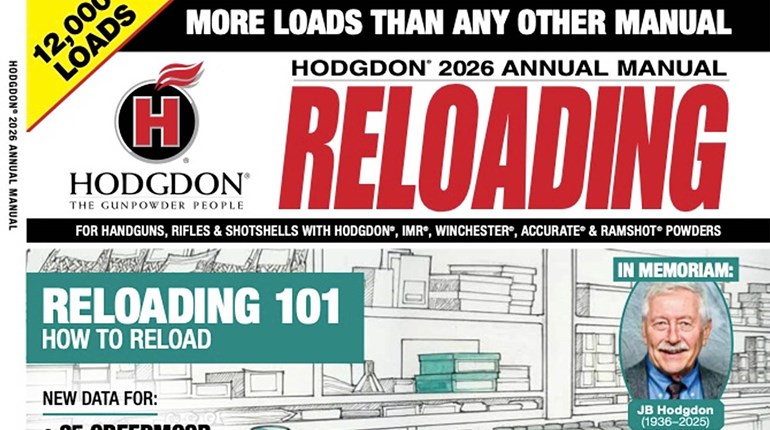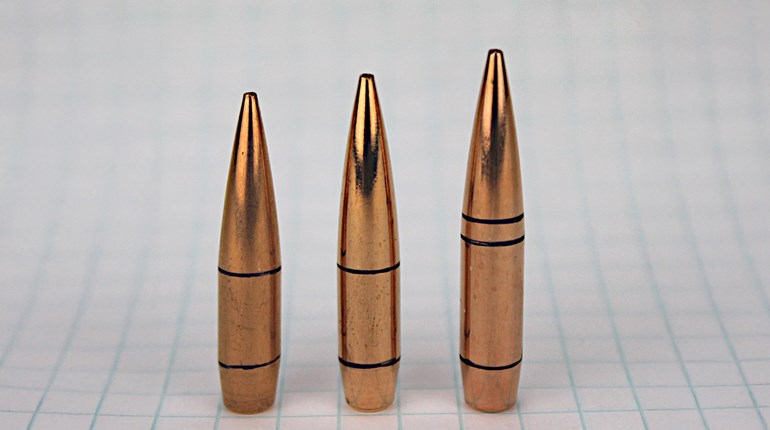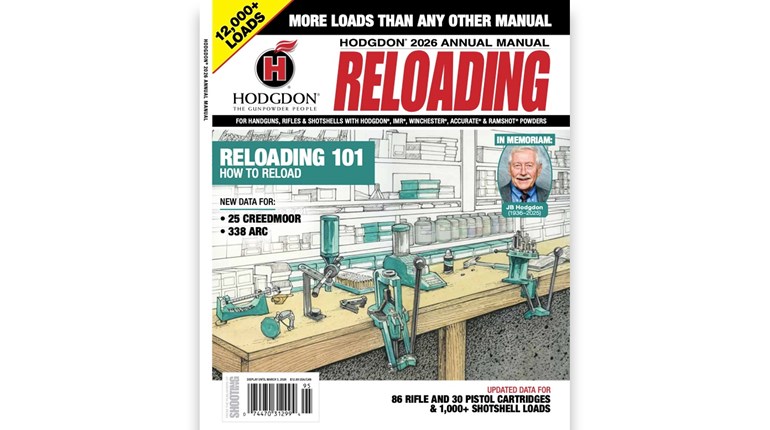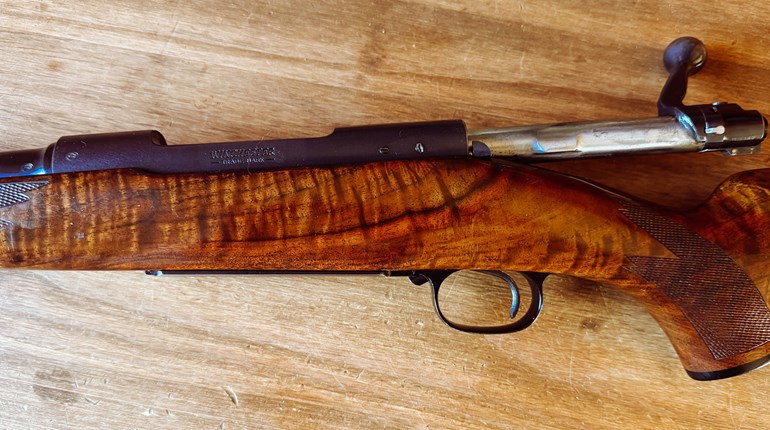
We’ve had a few weeks off from our reloading considerations. We trust you’ll agree that NRA Annual Meetings, NRA Carry Guard and a little Civil War history were a worthwhile hiatus.
In any case, we’re back at it, and not with a soft landing, either. This week we’re covering the step where most problems with ammunition, not to mention difficulties in the reloading process, are initiated. It’s bad news, certainly, but far from unrecoverable. The flip side of that coin is correspondingly good news: Get started correctly in the resizing and de-capping phase, and a reciprocally large number of problems simply never appear.
In most systems of reloading, these two steps are done at very nearly the same time, and—technically speaking—are “case prep” rather than reloading. We took a high-level look at this pair here, and now get down to the nitty gritty.
There are some assumptions to clarify. The first is that we’ll be operating as though we’re using once-fired (or more) cases, as some of the most aggravating later problems come from mistakes with these occasionally-less-than-perfect specimens of cartridge brass. New brass doesn’t need many of these expedients, but you also only get the “free pass” they supply one time. Next is that we’re agnostic on construction method for the moment. Whether you’re single-stage meticulous, or crank-‘em-out progressive, all our considerations will apply unless otherwise noted.
“Pre” Work
We know successful—and in this context, we mean in terms of volume—reloaders who operate at widely different levels of preloading case scrutiny. Some sort cleaned brass into same head-stamped lots, and then measure and sub-sort those lots into +/-.002 overall length groups. (Some folks will even trim pistol brass to get larger lots, but we gave this up decades ago—it is simply too time consuming unless bullseye-like accuracy is the game). Only then do de-capping and resizing occur. Others sort by caliber and reload; no separate inspection, no cleaning, and certainly no time-consuming OAL (overall length) or other measurements.
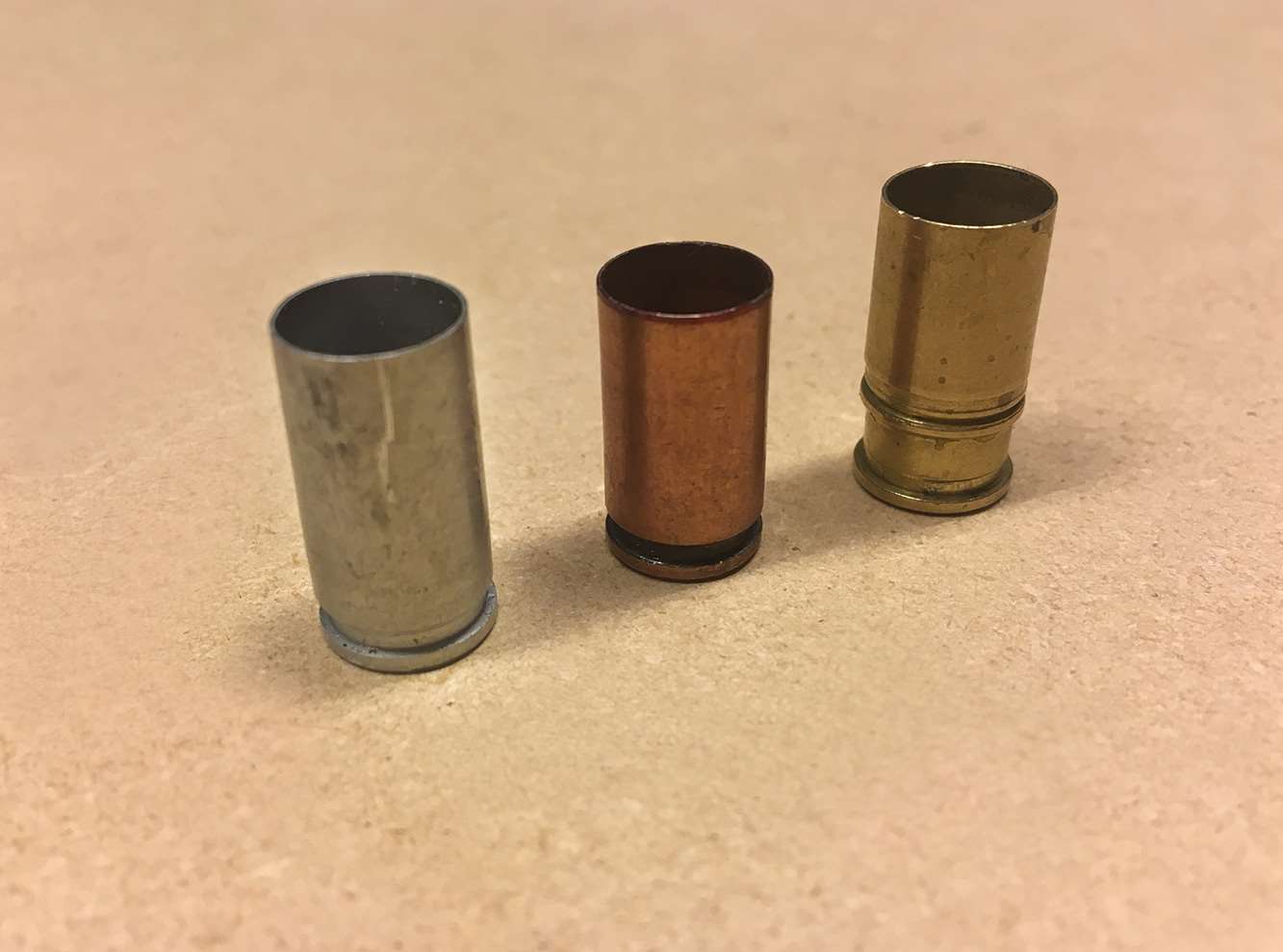
The variance here may seem wide, but as we noted, serious volume shooters on both ends of the spectrum, and many more somewhere in between, produce extremely similar results: Good accuracy, good reliability and no damage to firearms.
The apparent dissimilarity in the invested effort is not as large as you might think. A lot of the QC a cautious cleaner/sorter/measurer invests on the front end is paid back, so to speak, by faster actual reloading, and often markedly so. The time saved by getting right to work is then not as great when considering all the potential halts that must be dealt with in real time—a few .380 ACP or .38 Super cases mixed in that batch that was supposed to be 9 mm only, or a pebble inside a case that snaps off a de-capping pin are just two of the things that can slow you down.
The former causes a mumbled deprecation and a few seconds' delay, multiplied by the number of occurrences. But the last, even if you’re pretty organized, will easily gobble up five minutes; if not, 15 is more like it. Limiting your “pre” checks generally means you’ll have to expand “post” checks, given the generally much wider variance of inputs.
In other words, prep work pays variable dividends. Once you understand the mechanics, different systems reward different levels of preload scrutiny. (We could get 200 rounds per hour out of a Rock Chucker in the old days, but that was with everything all-but-perfectly prepped.) Now we’re a lot closer to a 500/hour average, and our prep—except for big match ammo—is modest. Nor is such a difference merely mechanical: Experience may soon have you telling a .380, or steel, or aluminum case from a 9 mm by feel, too. If that weedout can occur as you’re feeding the die, a biggish sorting step can be eliminated.
Perhaps the point is obvious: However you decide to partition prep tasks, the cases you feed into the crucial resizing/de-capping step should be as nearly alike as you can manage. For handgun training/practice ammo, this can be “not very;” for precision rifle cartridges, differences should be essentially undetectable.
Rifle Considerations
Depending on the caliber, so-called bottleneck rifle cases generally require more work than any straight-walled case in any arm, long or short. Simply, such cases stretch when fired, and the degree of deformation under relative extremes of heat and pressure can leave them dimensionally incompatible with a chamber ‘spec’ after as few as one use. Here, OAL measurement becomes a must, and redress via trimming of a too-long case as well.
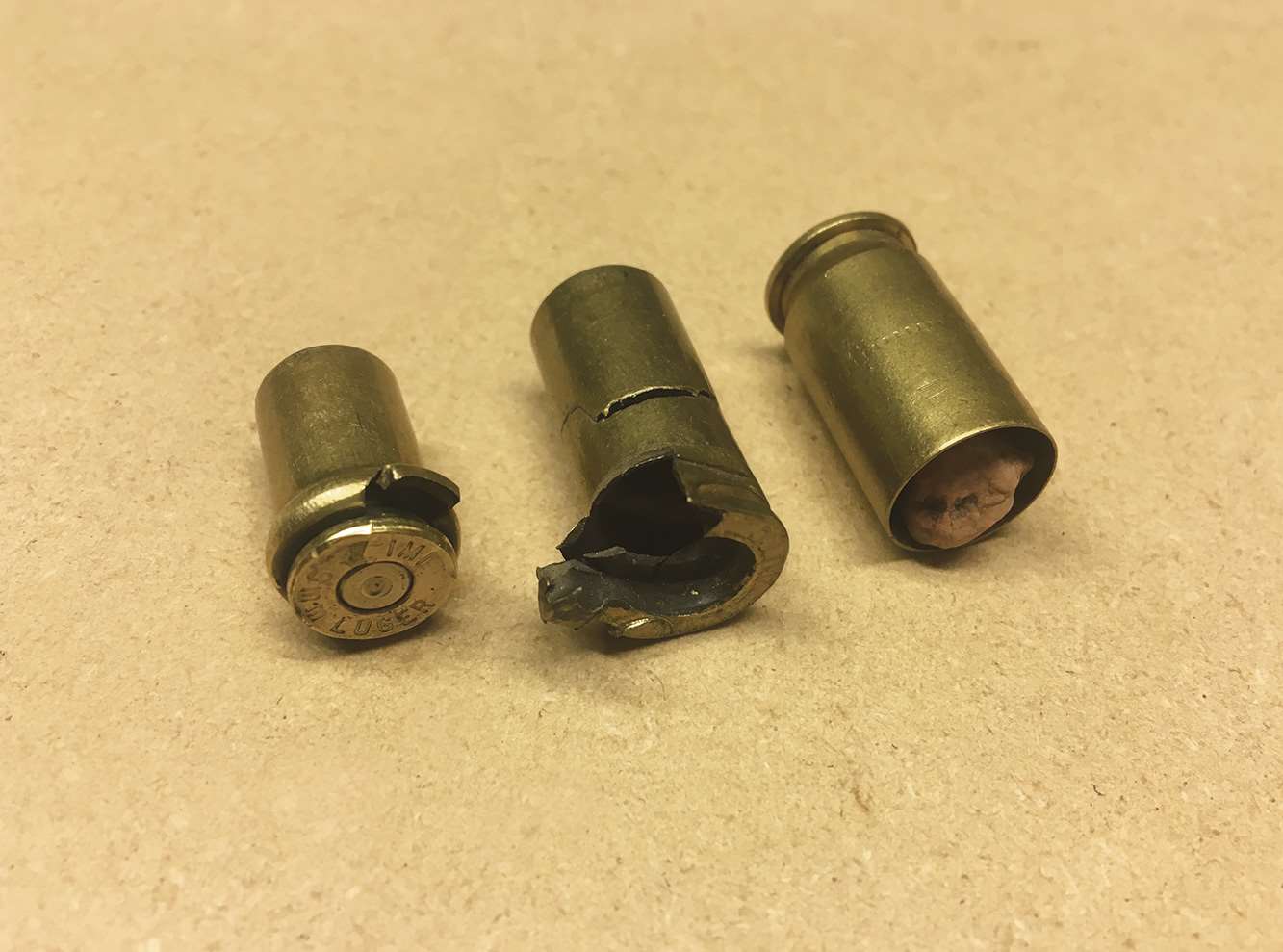
No matter what system you’re using (single or multi-stage, turret or progressive), this will require attention as part of the resizing process.
Rifle cases must also be checked for signs of head separation. Shoot nearly any centerfire rifle long enough, and you’ll experience one of these. While these aren’t exactly dangerous in a modern rifle in good condition, they’re to be avoided, and especially if repeated in the same firearm. They will almost certainly stop your rifle for the shooting session unless you carry a special sort of tool (not a bad idea). We’ll deal with this check when we get to loading some rifle rounds.
To Clean Or Not To Clean
Given a choice, we much prefer to work from extremely clean cases. But contrary to wide assertion, this is not a ballistic necessity: As long as cases are dimensionally correct—and this specifically and especially includes volume—you’re good to go. (In other words, no detritus of any sort inside the case, particularly a rifle case.)
On the other hand, it’s also plain that while the benefits are ancillary, they’re pervasive: Nearly everything you’d like to keep out of your process—and especially out of your press and valuable firearms—is simply easier to find and remove if cases are clean. Split necks (the most common failure), incipient head separations, bulges—you name it—are all easier to spot against a background of shiny brass. We’d be remiss not to note that it’s just more fun, too. We’ve seen good-looking ammo that didn’t shoot well to be sure, but a lot more, ah, crusty stuff that shot poorly. Funny how taking the time to get the outside looking right generally increases the likelihood that the inside is right, too.
How to clean brass could be smallish book in itself. Generally, everything gets called “tumbling,” but this isn’t strictly correct. A tumbler (here, from our friends at Midway) “rolls” cases in a media (wet, dry, or even stainless steel) that literally knocks off dirt and contaminants. More common, however, but still called a tumbler, is actually a vibratory case cleaner (here, a powerful, durable monster from Dillon; in our heyday, we ran two of these with different optimized media—one to clean, the other to polish—and had the cleanest cases in about 13 states). These are mostly dry media machines.
Ultrasonic case cleaning is a newish arrival in the shiny brass biz. Our friends at Hornady offer several, and these have one advantage over either of the other methods, though they add a reloading step. You resize and de-cap (and trim, if needed) first, and then clean your cases, before returning to the rest of the process. Upside is simple: Ultrasonics get the insides as squeaky clean as the outsides, including carbon residue inside the case and primer pocket that dry methods don’t/can’t reach. Side “bennies” here: These can double for firearms and other cleaning tasks, and they’re fast.
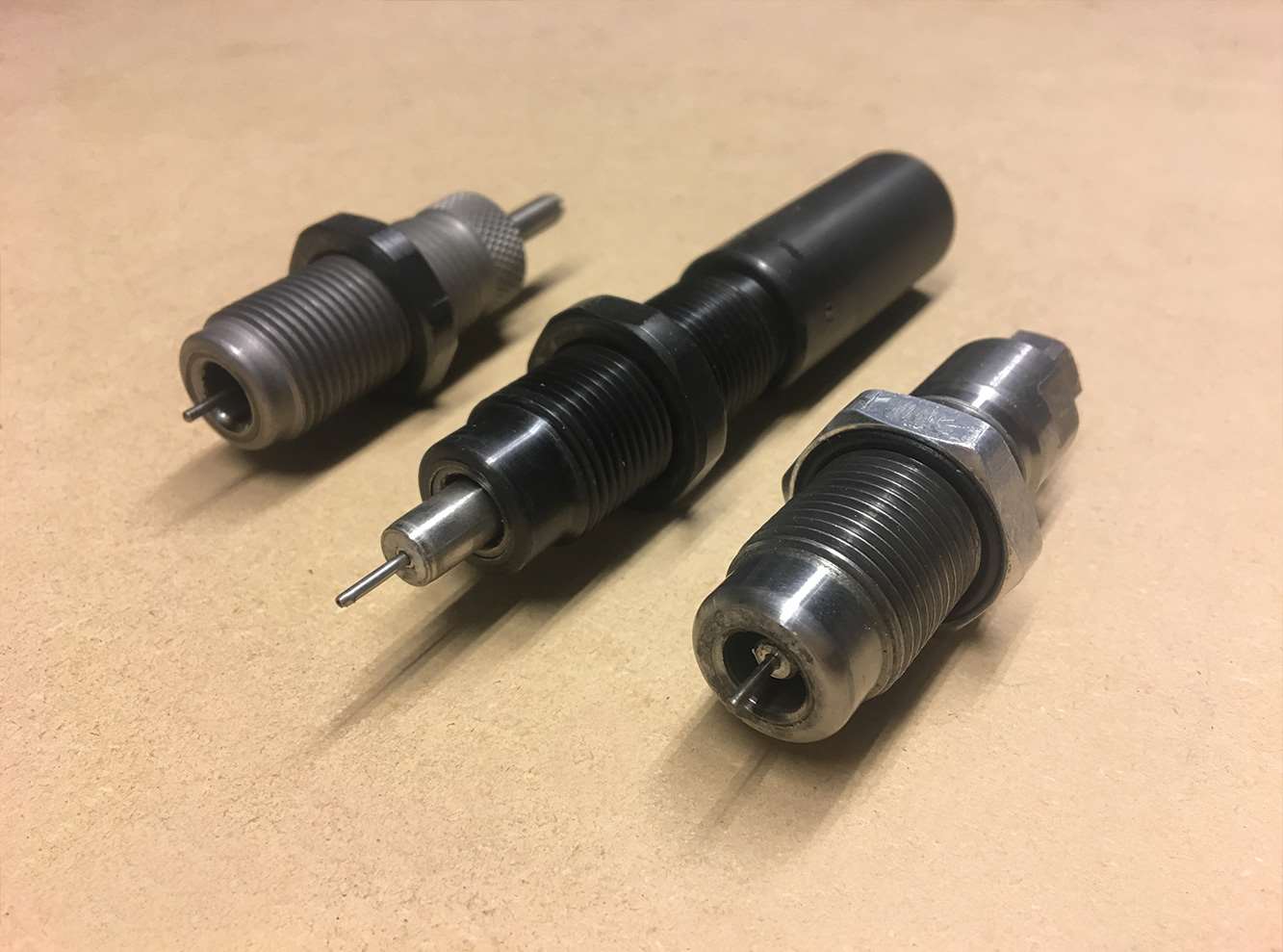
We say this “adds” a step in the sense that you must leave the press between de-capping/resizing, but it may only be a re-ordering. The upshot is that you don’t sit down once to produce complete rounds. The cleaning process interrupts the seven steps we identified in Part 3, between Steps 2 and 3, and only you can decide if it’s worthwhile. Our input? Practice ammo, decidedly no; match ammo, probably; hunt of a lifetime, we’d buy a ‘sonic rig for this.
Die Considerations
Again, this could be a book in itself. Our shortened version vis a vis resizing/de-capping is one word: carbide. We’ve got a mixed 9 mm set (Evolution Gun Works “minus”.001 sizer, RCBS flare and seat, and Lee Factory Crimp) that have somewhere north of 200,000 rounds through them, and all are still running strong.
For Steps 1 and 2 in pistol, we think the crucial considerations beyond carbide are dual: Undersize a little (this tames a host of ills), and size as far down the case as you can. The former means a specialized die like our EGW, the latter, proper adjustment. Just reading and following the instructions that come with your resizer/de-capper may not really get this last part done, as there’s usually some notation about running the die down to the shell plate or shell holder, and then backing off a little. We can’t recommend this as it will simply under-resize some cases, and creates annoying and even dangerous feeding problems (like cases that don’t quiiiiiite allow the slide to close on a semi-auto; can you say “kaboom?”). In revolvers, under-resizing is less likely to be out-and-out harmful, but nevertheless extremely annoying: Both chambering and un-chambering issues devolve to cussin’ in a hurry.
We think this recommendation stems from a reasoned desire not to need quite as much overall force in the resizing stroke, but there’s a better way to fix this … see “lube,” below.
Rifle die settings are a different matter, and a thornier one. Straight wall cases are a breeze by comparison. Most of the complexity in rifle relates to the shoulder, and allowing it to be too far forward (die too high) or too far back (die too low) can create problems—such rounds will just not chamber. It doesn’t take long to discover you have a surprisingly small range of lengths to play with.
The best course here is patience, and early recognition that you’ll wreck a few cases. Trial and error is your friend, and the goal is smooth chambering. In bolt guns, this is easier to check than in auto loaders, and the latter is best done with a bullet seated and crimped (Steps 6 and 7), but NO powder or primer—your own little “action proving” dummy, in other words. These, by the way, are always a good idea. We practically never change bullets without running a few up, and loading/hand-cycling them as aggressively as we can. Especially in training/practice ammo, it’s by far the best way to be sure varied cases and a range of OALs all result in workable ammunition. With no primer and powder, they’re also about the only way to safely spec feeding characteristics off the range.
Two other die details bear mention on rifle: In straight wall cases, the resize is always full-length, and that means just what it sounds like. But for bottleneck cases, it’s often desirable to only resize the neck. Such “fire-formed” brass is custom fit to a chamber by the initial firing and often improves accuracy, and such cases are unnecessarily overworked by another trip through a full-length die. Ergo, neck sizing-only dies are often used by the most serious accuracy crowd. As long as you mind OAL, this has case life benefits too. Though not available in every caliber, consider a case gauge (here some JPs, or here a panoply of Wilsons by way of Brownells) as a speedy way to monitor case “growth,” and the sort of sizing needed for a given lot of cases.
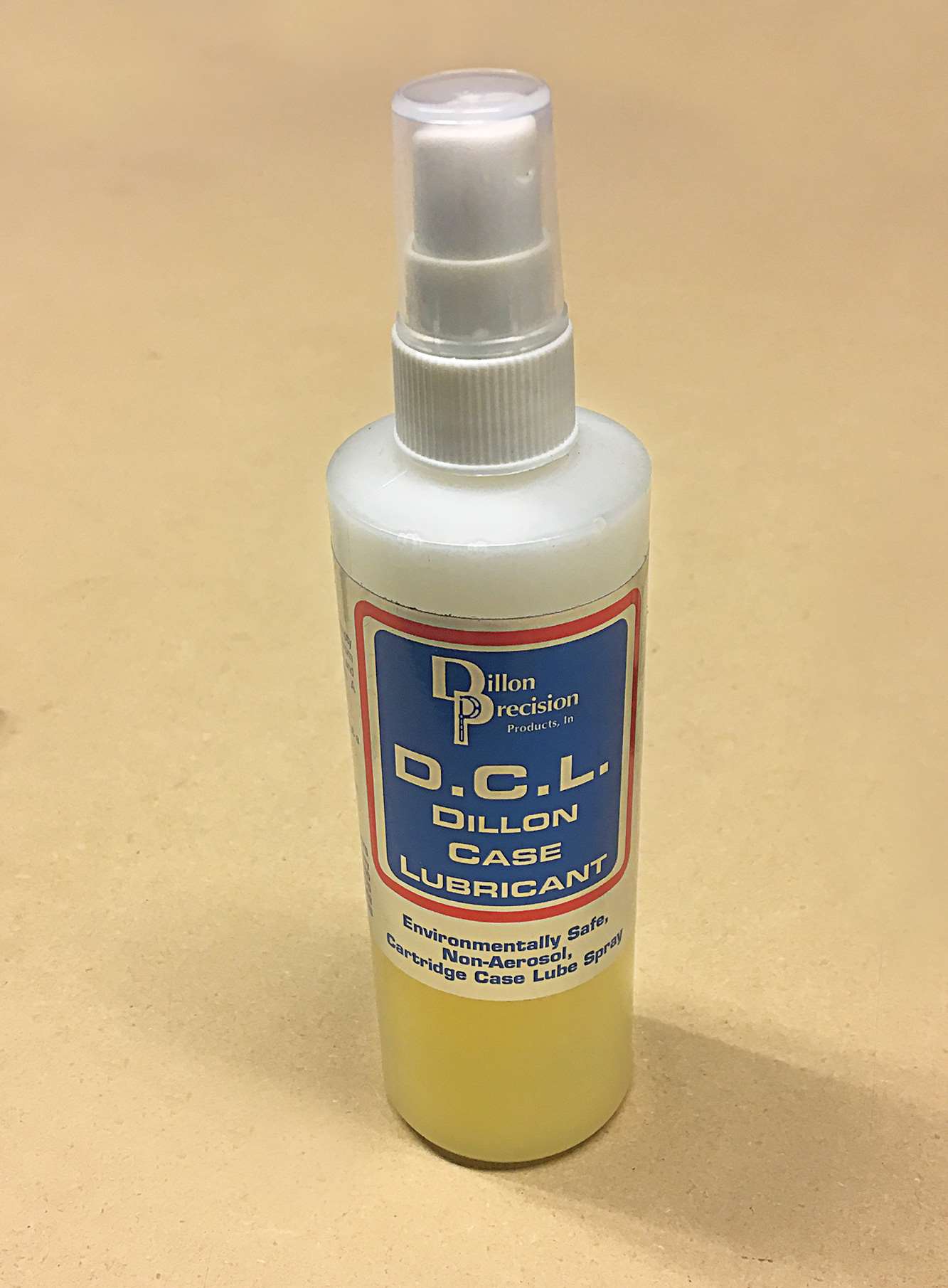
The second consideration is largely economic: Our “carbide” recommendation may go out the window. You can buy carbide dies in rifle calibers, but most folks won’t really benefit from them. With proper lubrication, steel rifle dies will last a long time. And speaking of lubrication …
Lube Those Cases
Carbide often gets sighted as an “out” on lubing cases, especially in pistol reloading.
Channel Nike here, sorta: Just–Don’t–Do It.
Lightly lube cases, no matter what sort of dies you use. The reason is simple: By far the most force in the reloading process is in the resizing step, and there’s no (good) reason not to reduce it when it is so easy. In straight wall pistol on a single stage press, we agree the difference may not be that noticeable. The axis along which the force applied to the work piece (the case) and tool (the press-mounted die) are well aligned. Good.
But this is pointedly not so in progressive systems, and this is where the problems of not lubing grow insidious and even cumulative. An example—which we concede is a little backward, even inductive—may make the point in the shortest possible way. Years ago, we encountered what we thought was a batch of brass that was making us crazy in terms of “high” primers. No matter our precautions, our finished ammo was showing a relatively sudden 10-20 percent high primer rate in a system that, a few months before, had produced these at well under 1 percent. The net result was a post-check nightmare, to say nothing of infuriating numbers of unusable rounds. Grrrrr and über grrrrr, to say the least.
We have no recollection of what made us finally resort to lubing, despite a new carbide die (yes, we tried about everything else). As if by magic, our high primer rate was cut almost to its old level.
The moral of the story—and why we recommend you lube from the outset and always—is actually pretty simple. Over a long service life, the off-axis and excessive force at our resize position made our progressive press wear to the point where the geometry of the “throw” of our ram was out of tolerance—or just plain “wobbling,” take your pick—for the purposes of seating primers. Paradoxically, the harder we pressed, the more out of tolerance the vectors became. Because lubing cases meant we needed a small fraction of the force we’d come to be using, misalignment—which our ever-increasing force had guaranteed—now seldom came into play. Lubing essentially salvaged this press, and we still use it often. Not coincidentally, wear of a crucial, central “shoulder” style bolt (retaining the shell plate) also went down in dramatic fashion—a five to eight times increase in lifespan—both a clue and proof of our hypothesis.
For the new reloader, the point is clear: Lube cases, and you’ll keep forces in better balance in your equipment. Not only will it last longer with more accuracy, it will simply break less.
Frank Winn has been studying arms and their relationship to tyranny, meaningful liberty and personal security all his adult life. He has been a firearms safety/shooting instructor for more than 20 years, and earned state, regional and national titles in several competitive disciplines.












